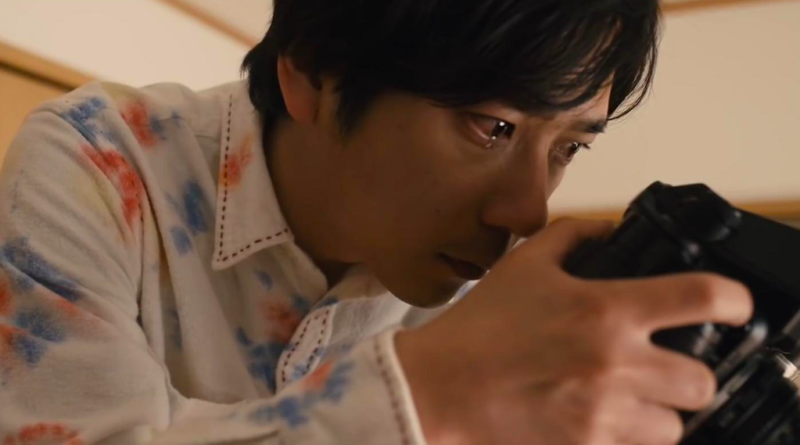INTERVIEW: Ryota Nakano visits Japan Society for family-centered fest
Photo: The Asadas is director Ryota Nakano’s latest feature, and it will screen at Japan Society. Photo courtesy of Japan Society / Provided by Keith Sherman and Associates with permission.
Japan Society, the Midtown Manhattan artistic venue, has always prided itself on examining and celebrating various creatives from Japan who have left their mark on a chosen field of culture. Throughout this week, they are exploring family dynamics with a specially curated film series called Family Portrait: Japanese Family in Flux, and the guest of honor is director Ryota Nakano, who knows a thing or two about depicting families on the big screen.
Nakano’s presence — a rare one in the United States, according to press notes — will coincide with screenings of his family-centered films The Asadas, which follows the life of real-life photographer Masashi Asada; 2019’s A Long Goodbye; and, of course, Her Love Boils Bathwater. The Nakano films screen Feb. 23-24, with the director in person at a couple of screenings.
Other highlights of Family Portrait include Hirokazu Kore-eda’s Still Walking, Kiyoshi Kurosawa’s Tokyo Sonata and Yasujiro Ozu’s Tokyo Twilight, in addition to Keiko Tsuruoka’s Tsugaru Lacquer Girl and Teruaki Shoji’s Hoyaman.
Recently Nakano exchanged emails with Hollywood Soapbox about the three films that will be screened at Family Portrait. Questions and answers have been slightly edited for style.
Why does the family unit, in its many variations, interest you so much for your cinematic journeys?
I lost my father when I was 6 years old, and I grew up with my mother and older brother without knowing my father for the most part. All my life, since I was a child, I think I have been asking myself, “What is family?” … Even now, I have not found the answer to that question. I am searching for the answer while making films about families with many variations, and I find it most interesting that each family is completely different from the other! I feel that the answer is probably still to be found.
How did you learn of the story of Masashi Asada for your latest feature?
At first, producer Ogawa showed me the photo book The Asada Family and told me that he wanted to make a film about this family. Then, upon further research, I learned that Mr. Asada, a photographer, had washed his photos after the Great East Japan Earthquake instead of taking them, and this film was born.
In The Asadas, the photographer finds “new purpose” after the 2011 earthquake. What do you think this says about finding one’s artistic inspiration in life?
For an artist, artistic inspiration is the driving force. For me, as a filmmaker, the encounter with Masashi Asada was the greatest artistic inspiration. Plus, I think the thought that this inspiration might ultimately benefit someone else was an additional driving force. I am sure that Mr. Asada, who was washing the pictures, also had this thought, so I feel that our inspirations overlapped.
Do you like talking about your films in Q&A sessions, or do you prefer the art to stand for itself?
I like it because I get to know how the audience felt about the film. Q&A sessions overseas are especially exciting and interesting because questions I never expected to be asked are sometimes raised. Of course, there are times when I think, “I don’t want to explain. Please feel it.”
How do you build trust with your actors?
We prepare as much as we can before shooting to make it easier for the actors to perform. The Asadas is based on a true story, and the characters are real. So before filming, we took the actors to Tsu City in Mie Prefecture, where the Asada family actually lives, to meet the actual Asada family, have dinner and talk a lot. We also practiced actual photo washing and gave them dialect instruction. I intend to guide the actors so that they can perform without hesitation from the first day of shooting.
Why do you think Her Love Boils Bathwater has become such a popular film and one of your signature pieces?
I believe that it is the feelings on the edge that move people the most. I depict many feelings and actions that are on the edge of people’s lives, such as things that they would not do but do, things that seem impossible but are possible, and so on. I also think it’s because it depicts the ridiculousness of people trying to live life to the fullest. I think the strength of this film is that even though it is a story about a dying mother, it can make you giggle a lot.
What’s next for you?
I am preparing several movies right now. They are all family movies, but they all feature very different families. That is why they are interesting. I am very interested in co-production with foreign countries and am working to make it happen.
By John Soltes / Publisher / John@HollywoodSoapbox.com
Family Portrait: Japanese Family in Flux, featuring the work of Ryota Nakano and other filmmakers, continues through Saturday, Feb. 24, at Japan Society in Midtown Manhattan. Click here for more information and tickets.

